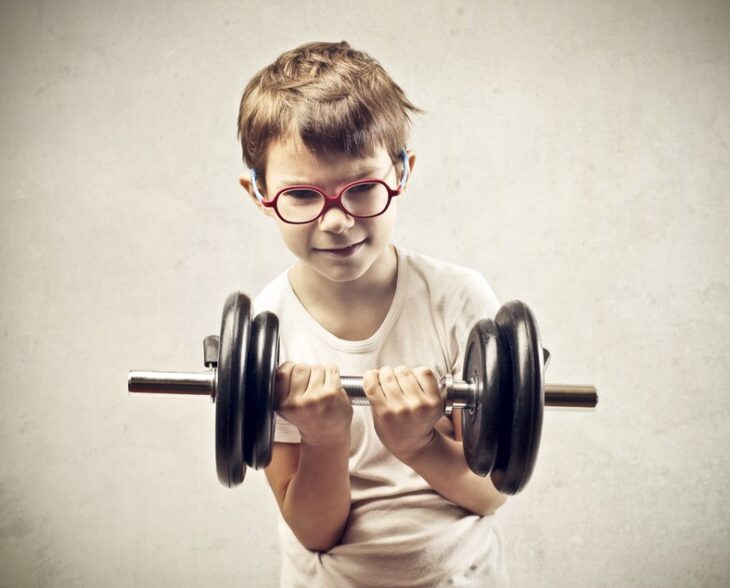Children who engage in fitness activities from a young age are more likely to live longer and healthier lives. The tips outlined here will provide the tools you need to help improve your child’s fitness, and who knows – they may even be able to participate in collegiate athletics someday!
Contents
Enroll In Rowing Camp
Some parents may not think of rowing as the first activity to increase cardiovascular health. However, rowing offers children and teens a great cardio workout. Rowing also provides a thorough workout for the following muscle groups:
- Biceps and triceps
- Obliques
- Abdominals and core
- Calves
- Glutes
- Quadriceps
- Pectorals
Regular rowing, which your child can enjoy at a youth rowing camp, boosts the capacity of the entire cardio system, including the heart, blood, and blood vessels. The heart must pump blood faster, which increases heart strength. After rowing camp, your child or teen will have considerably more cardiovascular stamina.
Your child should return from rowing camp with increased physical fitness. Perhaps your child will even be able to compete in rowing at the collegiate level! Many young people who regularly attend rowing camp eventually row competitively in college or even professionally.
Plus, rowing is a fun and rewarding group activity. Your child or teen will work closely with other youths to improve as a team. This teamwork is an important lesson early in life that can benefit them as they transition from adolescence to adulthood.
There are plenty of outstanding rowing camps your kids can attend worldwide, too! You can find out more about rowing camps in your area searching online.
Try Weight Training

Source: daimanuel.com
Under the supervision of an adult, children eight and older can benefit from weekly weight training. Lifting weights increases muscle mass, endurance, and strength, and there is also a cardio benefit.
Several studies show that youth will gain endurance and strength by lifting moderate weights for many repetitions instead of heavy weights for low repetitions.
Just doing 30 minutes of weightlifting once or twice per week with your child or teen is enough to offer a marked increase in fitness and strength.
Ensure your child works closely with an adult, trainer, or coach when they begin lifting weights, so they know how to do each exercise correctly.
Offer A Variety Of Activities
An active daily routine is essential to build cardio fitness and maintain a steady weight. It also helps to vary the daily routine with a variety of physical activities.
Swimming, dancing, cycling, jogging, and walking are excellent aerobic exercises that offer many benefits. They don’t have to do the same workout and activity every day; having your teen jog for 15 minutes one day is just as good for their cardio health as swimming for 30 minutes the next day.
Also, mixing up their activities means they won’t get bored repeating the same exercise six or seven days per week. Doing different cardio workouts also will ensure their bodies don’t get conditioned to the workouts, so they can achieve even better cardio fitness by cross-training.
Encourage A Heart-Healthy Diet

Source: health.clevelandclinic.org
If your child is already fit through rowing or another exercise, it’s critical that they employ a healthy diet to give them the fuel they need for optimal performance. Also, eating nutritious foods will ensure heart health for years to come.
Some ways to improve heart health for your child and the whole family include:
- Understand cholesterol: ‘Bad’ LDL cholesterol comes from animal products, such as egg yolks, meat, and dairy products. Higher levels of bad cholesterol boost the chances of heart disease. But HDL or ‘good’ cholesterol can shield you and your family from heart disease.
- Use unsaturated fats: Saturated fats are mostly found in butter, milk, and meat, as well as palm and coconut oils. Saturated fats may raise LDL, so your kids should eat less of them. Unsaturated fats increase levels of good cholesterol, so eat plenty of nuts, avocados, and olive and avocado oils.
- Reduce processed foods: Eating too many processed foods, such as cookies, crackers, and doughnuts, are bad for our hearts. They’re high in trans fats and cholesterol that can boost your LDL levels. Trans fats are very bad for the heart so avoid them as much as possible.
- Increase foods rich in fiber: Fiber is essential for a healthy heart, no matter your age. Soluble fiber attaches to bad cholesterol and helps remove it from the body. Feed your teen beans, lentils, and oats to boost their levels of fiber.
Tips For Youth To Get More Exercise
If your teen or child is already into rowing, running, or another sport, they already probably have a solid cardio fitness level. But kids are busy, and they may have difficulty incorporating more activities into their packed schedules.
Help your child get more exercise with these tips:

Source: openfit.com
- Take them to places where they can be more active, such as parks, basketball courts, hiking trails, and anywhere else that physical activity is required.
- Instead of watching Netflix after dinner, offer to go on a run or long walk with your teen.
- Compete with your kids during physical activity. Go for a mile run and try to keep up with or beat your teen. The additional competition can motivate already-fit teens to get in even better shape.
- Plan for activities. We all get busy with work and personal obligations, but build time into your day on weekends and evenings to engage in physical activities with your child.
- Be a positive role model. The more active you are in your daily life, the more your child will see it as the natural thing to do. Work out daily and do it with your child when you can, and they will follow suit.
All of us benefit from physical activity, including children and teens. Staying fit and healthy prevents obesity, improves health, and reduces the risk of serious illnesses as we age, including diabetes and heart disease.
Keep your child or teen committed to cardiovascular health with these tips, and they’ll live a longer, healthier life. They will increase their fitness levels and be better at rowing, running, swimming, and more.
